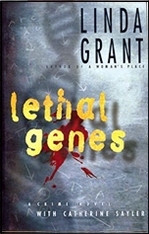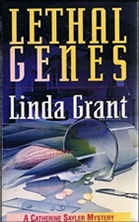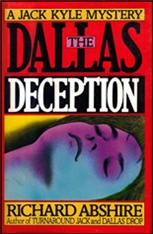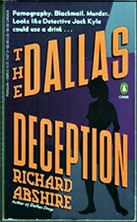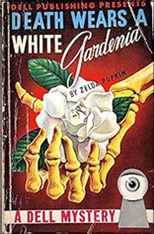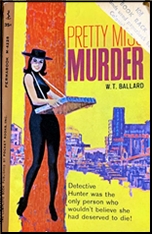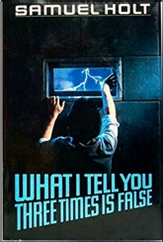Wed 20 Mar 2024
A 1001 Midnights Review: AARON ELKINS – Fellowship of Fear.
Posted by Steve under 1001 Midnights , Bibliographies, Lists & Checklists , Characters , Reviews[2] Comments
by Karol Kay Hope
AARON ELKINS – Fellowship of Fear. Gideon Oliver #1. Walker, hardcover, 1982. Popular Library, paperback, 1986. TV series: Quoting from Wikipedia “Gideon Oliver is a prime time television series that ran on the ABC television network between February 1989 and May 1989 as part of the ABC Mystery Movie rotation, along with B.L. Stryker, Kojak and Columbo. On the air for only five episodes, the series starred Louis Gossett Jr., and was created by Dick Wolf.”
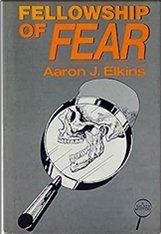
The early 1980s spawned a great many new mystery writers, and Aaron Elkins is one of the best of them. This first novel introduces us to Gideon Oliver, a young anthropology professor (Elkins himself teaches anthropology in northern California) who signed up for a summer teaching stint in Europe with the U.S. Overseas College. He’s recovering from the death of his beloved wife the year before and needs a break from that reality. And he’s never been to Europe.
Oliver gets a change of pace, all right. Far from the confines of academic life, he’s cast as the main character in an international spy ring — but not until he’s been robbed, attacked, and followed all over Europe does he take it seriously. He then teams up with John Lau, a U.S. security officer, who’s not quite so naive about these matters. After being suitably impressed by Oliver’s fine investigative mind — he is a physical anthropologist, after all, and used to solving mysteries with little more than a sliver of bone and some ash for evidence — Lau teams with him and they attack the spy operation with fresh enthusiasm.
Elkins has a good sense of contemporary character, dialogue, and plot. Gideon Oliver is a good man, and Elkins is good, too. He writes sparsely, to the point, and is cagey enough to keep us wondering until the very end.
Elkins’s second novel, The Dark Place ( 1983), also features Oliver and is set in the Olympic National Park in Washington State. It also has the distinction of being the first mystery to involve the ongoing hunt for Sasquatch, otherwise known as Bigfoot.
———
Reprinted with permission from 1001 Midnights, edited by Bill Pronzini & Marcia Muller and published by The Battered Silicon Dispatch Box, 2007. Copyright © 1986, 2007 by the Pronzini-Muller Family Trust.
The Gideon Oliver series —
1 Fellowship of Fear (1982)
2 The Dark Place (1983)
3 Murder in the Queen’s Armes (1985)
4 Old Bones (1987)
5 Curses! (1989)
6 Icy Clutches (1990)
7 Make No Bones (1991)
8 Dead Men’s Hearts (1994)
9 Twenty Blue Devils (1997)
10 Skeleton Dance (2000)
11 Good Blood (2004)
12 Where There’s a Will (2005)
13 Unnatural Selection (2006)
14 Little Tiny Teeth (2007)
15 Uneasy Relations (2008)
16 Skull Duggery (2009)
17 Dying on the Vine (2012)
18 Switcheroo (2016)

